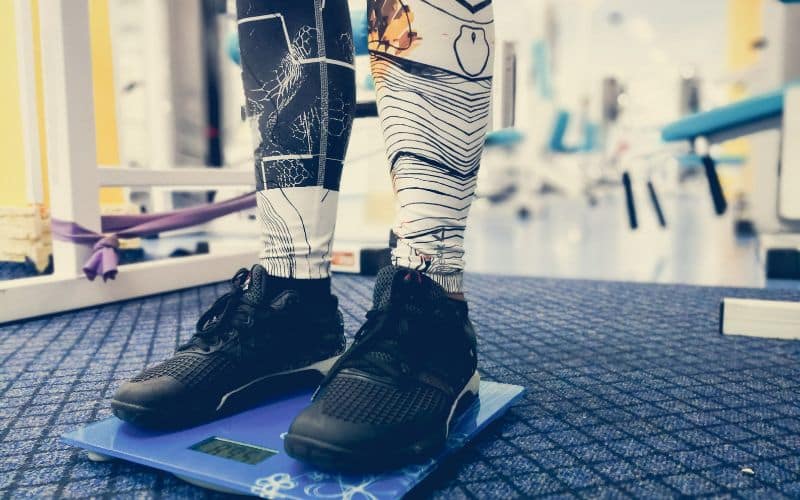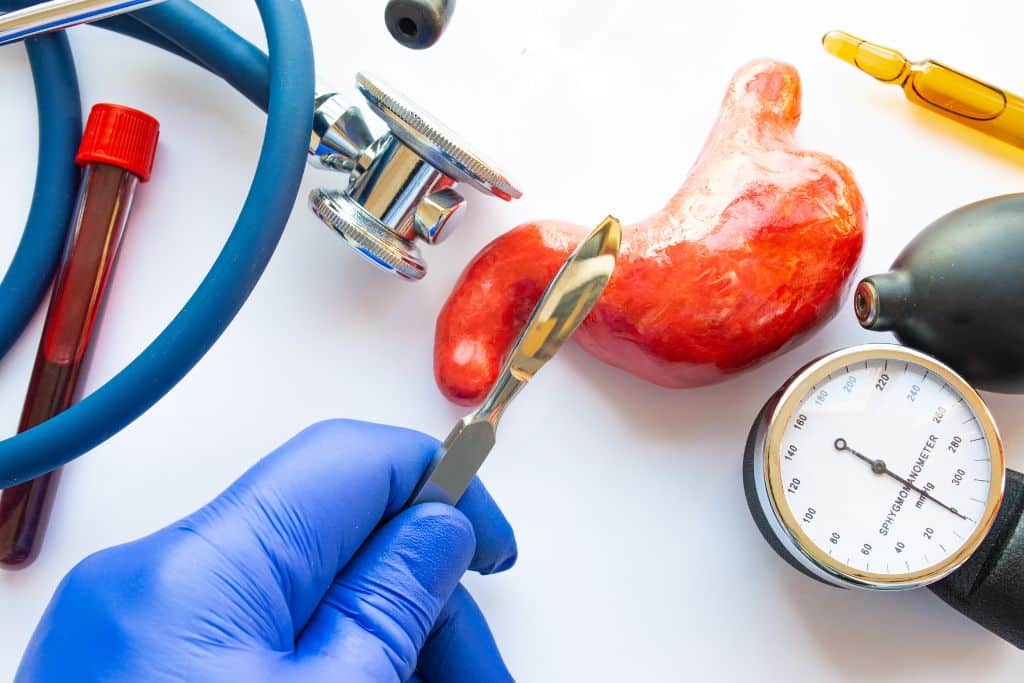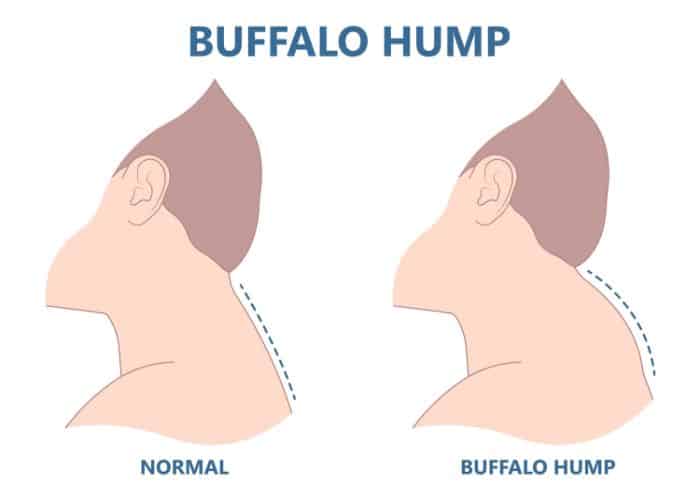If you're looking to get those coveted six-pack abs, you may be wondering what diet you need to follow. While there is no magic food that will give you abs overnight, a healthy diet is crucial for achieving a lean and toned midsection. In this article, we'll explore the best foods to eat and avoid for abs, as well as some tips for creating a sustainable meal plan.
To start, it's important to understand that spot-reducing fat in one area of your body is not possible. To get visible abs, you'll need to reduce your overall body fat percentage through a combination of diet and exercise. This means focusing on foods that are nutrient-dense, high in fiber, and low in calories.
Contents
Understanding the Basics of Abs

To understand how to diet for abs, it's important to understand the basics of what abs are and how they are formed. Abs, short for abdominal muscles, are a group of muscles located in the front of the abdomen. These muscles play an important role in supporting the spine, stabilizing the core, and aiding in movement.
The Role of Muscles
There are four main muscles that make up the abs: the rectus abdominis, the external obliques, the internal obliques, and the transverse abdominis. The rectus abdominis is the muscle that runs vertically down the middle of the abdomen and is responsible for creating the appearance of the "six-pack" abs. The external and internal obliques are located on the sides of the rectus abdominis and help with rotation and lateral flexion of the torso. The transverse abdominis is located beneath the other three muscles and is responsible for stabilizing the core.
To develop strong and defined abs, it's important to engage in exercises that target these muscles. Some effective exercises include planks, crunches, bicycle crunches, and Russian twists. It's also important to vary your exercises and add resistance to challenge your muscles and promote growth.
The Importance of Body Fat
While developing strong abs is important, it's also crucial to maintain a healthy body fat percentage to achieve a visible six-pack. Body fat covers the abdominal muscles, making them less visible. To reduce body fat, it's important to engage in cardiovascular exercise and maintain a calorie deficit through a healthy diet.
A diet for abs should include plenty of whole foods rich in fiber, protein, and healthy fats. Foods that may help build ab definition include lean meats, fruits and vegetables, nuts and seeds, and whole grains. It's also important to avoid processed foods, sugary drinks, and excessive alcohol consumption, as these can contribute to weight gain and hinder progress towards visible abs.
In summary, developing strong and defined abs requires a combination of targeted exercises and a healthy diet. By understanding the role of muscles and the importance of body fat, you can create a plan that works for you and helps you achieve your goals.
Nutritional Guidelines for Abs
To get abs, it's important to reduce overall body fat through a balanced diet and exercise routine. Here are some nutritional guidelines to help you achieve your goal:
Balanced Diet

A balanced diet is key to getting abs. Make sure to consume a variety of whole foods rich in fiber, vitamins, and minerals. Include fruits, vegetables, whole grains, lean protein, and healthy fats in your diet.
Protein Intake
Protein is important for building and repairing muscle tissue. Aim to consume 1 gram of protein per pound of body weight per day. Good sources of protein include lean meats, fish, eggs, and plant-based options like beans and tofu.
Carbohydrate Management
Carbohydrates are an important source of energy, but consuming too many can lead to excess body fat. Focus on consuming complex carbohydrates like whole grains, fruits, and vegetables. Limit your intake of simple carbohydrates like sugar and processed foods.
Healthy Fats
Healthy fats are important for overall health and can help you feel full and satisfied. Include sources of healthy fats in your diet like nuts, seeds, avocado, and olive oil. Avoid trans fats and limit saturated fats.
By following these nutritional guidelines and combining them with a consistent exercise routine, you can reduce overall body fat and build strong, defined abs.
The Role of Hydration
Staying hydrated is an essential part of any diet, especially when it comes to building abs. Adequate hydration helps keep your body functioning properly and can also aid in weight loss.
Drinking enough water can help you feel full, which can prevent overeating and help you stick to your diet plan. Additionally, staying hydrated can help prevent water retention, which can make you look and feel bloated.
To ensure you're staying properly hydrated, aim to drink at least 8-10 cups of water per day. You may need to drink more if you're exercising or if you live in a hot climate.
It's also important to note that drinking too much water can be dangerous. Overhydration can lead to a condition called hyponatremia, which occurs when the sodium levels in your blood become too diluted. Symptoms of hyponatremia include nausea, headache, confusion, seizures, and in severe cases, coma and death.
In addition to drinking water, you can also stay hydrated by eating water-rich foods such as fruits and vegetables. Some examples include watermelon, cucumbers, strawberries, and spinach.
Overall, staying hydrated is a key component of any diet plan, especially when it comes to building abs. By drinking enough water and eating water-rich foods, you can help prevent bloating, aid in weight loss, and keep your body functioning properly.
Exercise and Abs
When it comes to getting abs, diet is crucial, but exercise is also important. Exercise can help build muscle and burn fat, which can help reveal your abs. In this section, we'll cover three types of exercise that can help you get abs: cardiovascular exercise, strength training, and core-specific workouts.
Cardiovascular Exercise

Cardiovascular exercise, also known as cardio, is any type of exercise that gets your heart rate up. Cardio can help burn calories and fat, which can help reveal your abs. Some examples of cardio include running, cycling, swimming, and jumping rope.
To get the most out of your cardio workouts, aim for at least 150 minutes of moderate-intensity cardio per week, or 75 minutes of high-intensity cardio per week. You can also try incorporating high-intensity interval training (HIIT) into your cardio workouts, which involves alternating periods of high-intensity exercise with periods of rest.
Strength Training
Strength training involves lifting weights or using resistance bands to build muscle. Building muscle can help increase your metabolism, which can help you burn more calories and fat, and reveal your abs. Some examples of strength training exercises include squats, lunges, push-ups, and pull-ups.
To get the most out of your strength training workouts, aim to work all of your major muscle groups at least twice per week. You can also try incorporating compound exercises, which work multiple muscle groups at once, into your workouts.
Core-Specific Workouts
Core-specific workouts target your abs and other muscles in your core, such as your obliques and lower back. Some examples of core-specific exercises include crunches, planks, and Russian twists.
To get the most out of your core-specific workouts, aim to work your abs and other core muscles at least two to three times per week. You can also try incorporating variations of these exercises, such as bicycle crunches or side planks, into your workouts.
Overall, incorporating a combination of cardiovascular exercise, strength training, and core-specific workouts into your exercise routine can help you get abs. Remember to always consult with a healthcare professional before starting a new exercise routine.
Importance of Rest and Recovery
Rest and recovery are essential components of a healthy lifestyle, especially when it comes to achieving a six-pack. While it may seem counterintuitive, taking time off from working out can actually help you reach your fitness goals faster.
Studies suggest that overtraining syndrome affects roughly 60% of elite athletes and 30% of non-elite endurance athletes. The ill-effects of overtraining syndrome include increased body fat, a higher risk of dehydration, lower libido, and mood disturbances. Once overtraining syndrome sets it, it can be difficult to reverse.
Taking rest days between workouts is crucial for allowing the body's muscles to recover and repair themselves. This recovery period is when the muscles grow and become stronger, leading to better performance and a more defined physique.
In addition to rest days, it's important to prioritize getting enough sleep and proper nutrition. These factors play a significant role in muscle recovery and overall health. Adequate sleep allows the body to repair and regenerate, while proper nutrition provides the necessary nutrients for muscle growth and recovery.
It's also important to listen to your body and take breaks when necessary. Pushing yourself too hard without proper rest and recovery can lead to injury and setbacks in achieving your fitness goals.
In summary, rest and recovery are crucial components of a healthy and effective fitness routine, especially when it comes to achieving a six-pack. By prioritizing rest days, sleep, and proper nutrition, you can optimize muscle growth and recovery and reach your fitness goals faster and more safely.
Monitoring Progress and Adjusting Your Diet

When it comes to dieting for abs, it's important to monitor your progress regularly. This can help you identify what's working and what's not, and make adjustments accordingly. Here are some ways to monitor your progress:
- Weigh yourself regularly. Weighing yourself once a week can help you track your progress and make adjustments to your diet as needed. However, keep in mind that weight is not always the best indicator of progress, as it can fluctuate due to factors like water retention and muscle gain.
- Take measurements. Measuring your waist, hips, and other areas can give you a better idea of how your body is changing. You may find that you're losing inches even if the scale isn't moving much.
- Track your food intake. Keeping a food diary or using an app like MyFitnessPal can help you track your calorie intake and make adjustments as needed. It can also help you identify any problem areas in your diet, such as too much sugar or not enough protein.
Once you've been monitoring your progress for a few weeks, you can start making adjustments to your diet as needed. Here are some tips:
- Adjust your calorie intake. If you're not seeing the results you want, you may need to adjust your calorie intake. Aim for a deficit of 500-1000 calories per day to lose weight at a healthy rate.
- Adjust your macronutrient ratios. If you're not getting enough protein or healthy fats, you may need to adjust your macronutrient ratios. Aim for a diet that's high in protein and healthy fats, and low in carbs and processed foods.
- Make small changes. Making small changes to your diet over time can help you stick to your plan and avoid feeling overwhelmed. For example, you could start by swapping out sugary drinks for water or adding more veggies to your meals.
Remember, dieting for abs is a marathon, not a sprint. It takes time and consistent effort to see results, but with the right approach, you can achieve your goals.
Potential Challenges and Solutions
Dieting for abs can be challenging, especially if you're used to eating a lot of processed foods or have a busy lifestyle. Here are some potential challenges you may face and some solutions to help you overcome them:
Challenge: Cravings
One of the biggest challenges when dieting for abs is dealing with cravings. It's normal to crave unhealthy foods, especially when you're first starting out. However, giving in to these cravings can derail your progress.
Solution: Plan Ahead
To combat cravings, plan your meals ahead of time and make sure you have healthy snacks on hand. This will help you avoid impulse buys and make healthier choices when you're hungry.
Challenge: Eating Out
Eating out can be a challenge when you're trying to diet for abs. Restaurants often serve large portions and meals that are high in calories and fat.
Solution: Make Smart Choices
When eating out, look for healthy options on the menu, such as grilled chicken or fish, salads, and vegetables. Ask for dressings and sauces on the side, and avoid fried foods and desserts.
Challenge: Time Constraints
If you have a busy schedule, finding time to prepare healthy meals can be a challenge.
Solution: Meal Prep
Meal prepping can help you save time and ensure that you have healthy meals ready to go. Set aside a few hours each week to prepare your meals for the week ahead. You can also use a meal delivery service or invest in a meal prep kit to make things easier.
Challenge: Plateaus
Plateaus are common when dieting for abs, and they can be discouraging. You may find that your weight loss stalls or that you're not seeing the results you want.
Solution: Mix Things Up

To overcome plateaus, mix up your diet and exercise routine. Try new foods and recipes, and switch up your workouts to challenge your body in new ways. You can also try increasing the intensity of your workouts or adding in some high-intensity interval training (HIIT) to boost your metabolism.
Conclusion
In conclusion, diet plays a crucial role in achieving a six-pack. A diet for abs should be well-balanced, rich in fiber, protein, and healthy fats. It's important to focus on overall fat loss rather than spot reduction. Pairing your diet with regular exercise and strength training can help build abdominal muscle and reduce excess body fat.
Some of the best foods to include in your abs diet are lean meats, fish, nuts, seeds, fruits, vegetables, and whole grains. These foods are rich in essential nutrients, vitamins, and minerals that help build muscle and reduce body fat. Additionally, drinking plenty of water and avoiding sugary drinks can help you stay hydrated and maintain a healthy weight.
It's important to note that there is no one-size-fits-all approach to dieting for abs. Everyone's body is different, and what works for one person may not work for another. It's essential to listen to your body and make adjustments as necessary. Consulting with a registered dietitian or a certified personal trainer can also be beneficial in creating a personalized diet plan that works for you.
In summary, achieving a six-pack requires a combination of a well-balanced diet, regular exercise, and strength training. By incorporating the right foods into your diet and making healthy lifestyle choices, you can achieve your goal of getting a six-pack and improve your overall health and well-being.
Frequently Asked Questions
What are some foods that are good for getting abs?
Foods that are good for getting abs include those that are high in protein, fiber, and healthy fats. Some examples of these foods include lean meats, fish, eggs, nuts, seeds, fruits, vegetables, and whole grains. It's important to focus on overall fat loss rather than spot reduction, so incorporating these foods into a well-balanced diet can help you achieve your goal of getting abs.
What is the best diet plan for getting abs?
There is no one-size-fits-all diet plan for getting abs, as everyone's body is different. However, a diet that is high in protein, fiber, and healthy fats, and low in processed foods and added sugars can help you achieve your goal. It's also important to focus on overall fat loss rather than spot reduction, so pairing your diet with regular exercise can help you achieve your desired results.
How often should I eat to get abs?
Eating frequency is not as important as the quality of the food you eat when it comes to getting abs. However, eating smaller, more frequent meals throughout the day can help keep your metabolism up and prevent overeating. Aim to eat every 3-4 hours to keep your energy levels stable and your hunger under control.
What are some exercises that can help with getting abs?
Exercises that can help with getting abs include those that target the abdominal muscles, such as crunches, planks, and leg raises. However, it's important to remember that spot reduction is not possible, so incorporating full-body exercises and cardio into your routine can help you achieve overall fat loss and reveal your abs.
What should I avoid eating if I want to get abs?
If you want to get abs, it's important to avoid processed foods, added sugars, and alcohol. These foods can contribute to overall weight gain and make it harder to achieve your desired results. Instead, focus on whole, nutrient-dense foods that will fuel your body and help you achieve your goals.
Is it possible to get abs in just 2 weeks with a diet?
While it's possible to make progress towards getting abs in 2 weeks, it's unlikely that you will achieve visible results in such a short amount of time. Getting abs requires a combination of a well-balanced diet, regular exercise, and overall fat loss, which takes time and consistency. It's important to set realistic goals and be patient with yourself as you work towards achieving your desired results.






